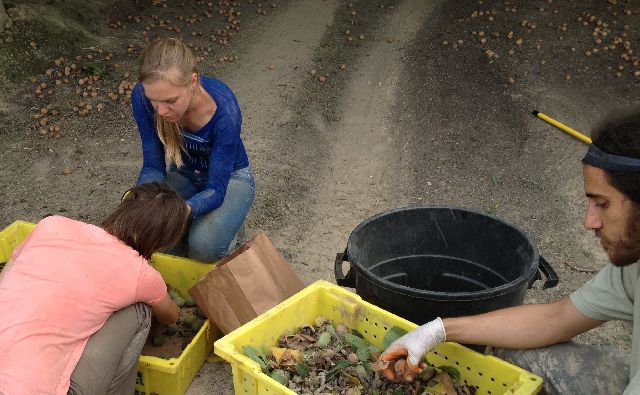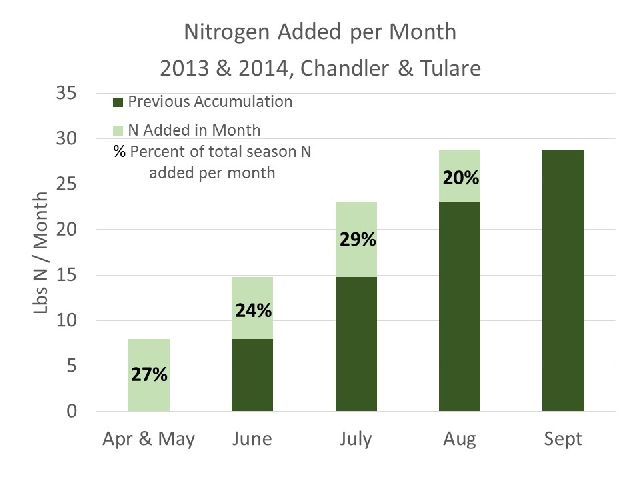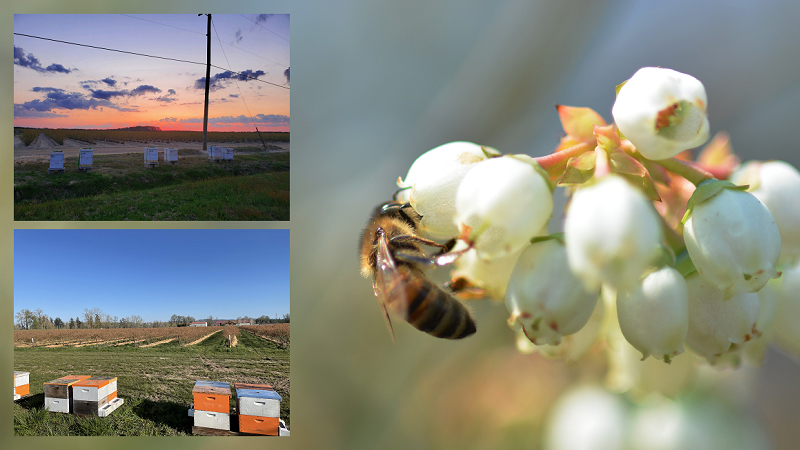Walnut Nitrogen Budgeting Critical

UC researchers sort nuts, hulls and other scraps to measure N content.
Nitrogen budgeting is a hot-button issue lately.
We know that when orchards are supplied with more nitrogen (N) than they can use, that N can be lost from the root zone and leached into groundwater aquifers. Walnuts, like other nut crops, require relatively high amounts of nitrogen to get a good crop. But just how much N do walnuts need? And when?
Research sponsored by the California Department of Food and Agriculture and the California Walnut Board is trying to answer this question by measuring N removed at harvest and the timing of N use by growing nuts. The research project is going into its third and final season. Results from the first two seasons indicate two main takeaways that may help those working on the walnut nitrogen management plan template from regional water coalitions:
1) Every ton of walnuts contains 25-32 pounds of N.
2) Walnut nut N uptake is evenly distributed over the growing season.
What does this mean for orchard management? The pounds of N per ton of crop (sometimes called the “right rate”) is a starting point for N budgeting — figuring out how much N to apply to an orchard over a season. And dividing up application of that N to match the timing of nut N uptake is key to maximizing nitrogen use efficiency and minimizing leaching.
Estimating Whole Season Use
An N budget combines (a) N removed in the crop with (b) estimated yields and (c) your estimated nitrogen use efficiency to figure out how much N an orchard needs in any given year.
Walnut crop N removal can range from 25 to 32 pounds for every ton of nuts harvested. Looking at six mature, well-yielding orchards (3 Chandler, 3 Tulare) over two years, on average there were 27 pounds N in every ton of walnuts (in-shell, 8% moisture).
When we count the N in the hulls, leaves, and other scraps removed at harvest, there can be an additional 1 to 4 pounds N removed with every ton of nuts. Some nitrogen is also used for new growth which, we estimate, can add another 4 to 8 pounds N per ton of walnuts.
All told, for a healthy orchard with a filled-in canopy, estimate 37 pounds N per ton will be removed from the orchard or permanently tied up in new growth. More research this season will work to put more exact numbers to N in scraps removed at harvest and new growth.
Estimating Non-Fertilizer Sources
In addition to synthetic fertilizers (urea, UN32, CAN-17, etc.) there are other potential suppliers of N, such as manure, compost and irrigation water. To figure out how much synthetic fertilizer may be necessary for your expected crop, subtract the non-synthetic supply from the estimated demand.
Exactly how much nitrogen in manure/compost is available to plants and when it’s available is complex and continues to be researched. Each soil type and climate responds differently to these amendments, so use your own experience and judgment when putting the following numbers to use. If you don’t use manure or compost often, only some of its N will be available the year it’s applied — 5% to 10% for cured compost, 15% to 30% for dried or aged manure (poultry or bovine), according to numbers from UC-ANR publication #No. 21623, “Guide to Efficient Nitrogen Fertilizer Use in Walnut Orchards.”
If you apply about the same amount of the same N content manure or compost annually, it should reach a steady state of turnover, where N in this year’s application roughly equals the N that will be released this year from previous applications. Convert percent to decimals for calculations below. Always use dry weight of manure/compost and %N on dry weight basis.
N in Manure/Compost =
Apply every year [Dry pounds manure/compost per acre] x [%N]
Apply just this year [Dry pounds manure/compost per acre] x [%N] x [% Available]
Estimating N in irrigation water requires a nitrate lab test. The result then must be converted into pounds N in an acre-inch of water, and multiplied by the acre-inches of irrigation water applied (or expected to be applied). Results may come back from the lab as NO³N-N or NO³. These two types of reporting (NO³N-N or NO³) use different conversion factors to get to N/acre-inch, according to the publication referenced above.
N in Irrigation Water (pounds/acre) =
NO³N-N_[NO³N-N]_ (ppm or mg/l) x 0.225 x _[Acre-inches of Irrigation]_
NO³_[NO³]_ (ppm or mg/l) x 0.051 x _[Acre-inches of Irrigation]_
 How Much N Is Needed When
How Much N Is Needed When
Because trees only take up N when they need it, not just when it is applied, matching the timing of N application with N use by the nut is a key component to achieving high nitrogen use efficiency. Research from the same UC walnut N project in 2013 and 2014 showed that the uptake of nitrogen by growing nuts was fairly steady over the growing season.
The graph combines our Tulare and Chandler numbers to show how this works for April blooming, late-September to mid-October harvest varieties. Out of the total N taken up by one ton of walnuts, 28% is taken up in April and May, 24% in June, 29% in July and 20% in August, which, because of the mathematically accepted practice of rounding off numbers, actually adds up to 101%.
N used by the fruit in the first month (April) comes from storage in the wood, which is then refilled. Little-to-no additional N is taken up by the nuts after August. For early blooming, early harvested varieties, this demand would be shifted earlier.
The take-away? Dividing your N applications evenly over the growing season (25% in May, June, July and August) will increase nitrogen use efficiency. Whatever number of applications you apply, remember that N can only be taken up when there are leaves on the tree; the first month of growth uses stored N, not N from the soil; and N uptake is complete by the end of August. ●









